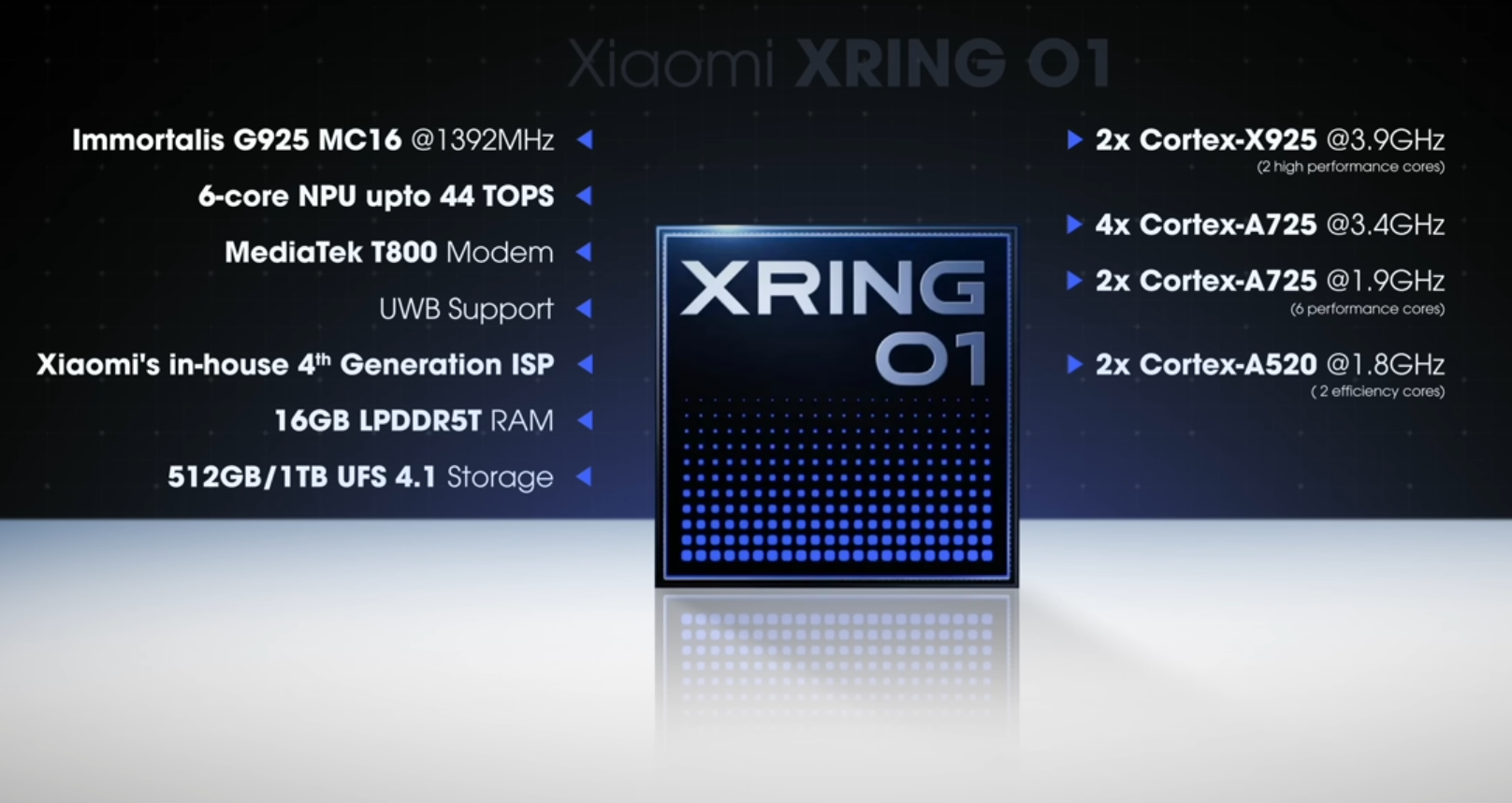Xiaomi has officially stepped into the smartphone silicon game, and not with a midrange chip, but a full-blown flagship processor—the XRING O1. Launched with their latest Xiaomi 15S Pro in China, this is Xiaomi’s first in-house mobile chipset, designed entirely from scratch. No Snapdragon, no MediaTek, not even an Exynos—it’s all Xiaomi.
And surprisingly, it’s really, really good.
In this blog, we’ll break down the architecture, benchmark results, gaming tests, heating behavior, camera ISP performance, and network capabilities of the XRING O1. Spoiler alert: it’s a serious contender.
A Quick Look at the XRING O1 Architecture
The XRING O1 is built on TSMC’s 3nm node, the same cutting-edge process used by Apple, Qualcomm, and MediaTek. But unlike others, Xiaomi has gone with a unique 10-core CPU design:
- 2 high-performance cores
- 6 performance cores
- 2 efficiency cores
This gives it more cores than most competitors. Though its clock speeds aren’t the highest, its chip size is the smallest in its class.
GPU and NPU
- GPU: Based on the same architecture as the Dimensity 9400, but with more cores and slightly lower clock speeds.
- NPU: A 6-core AI engine with up to 44 TOPS (Tera Operations per Second).
- Supports MediaTek T800 baseband and ultra-wideband.
Memory and Storage
The Xiaomi 15S Pro pairs the chip with:
- 16GB LPDDR5T RAM (13% faster than LPDDR5X)
- 512GB UFS 4.1 storage
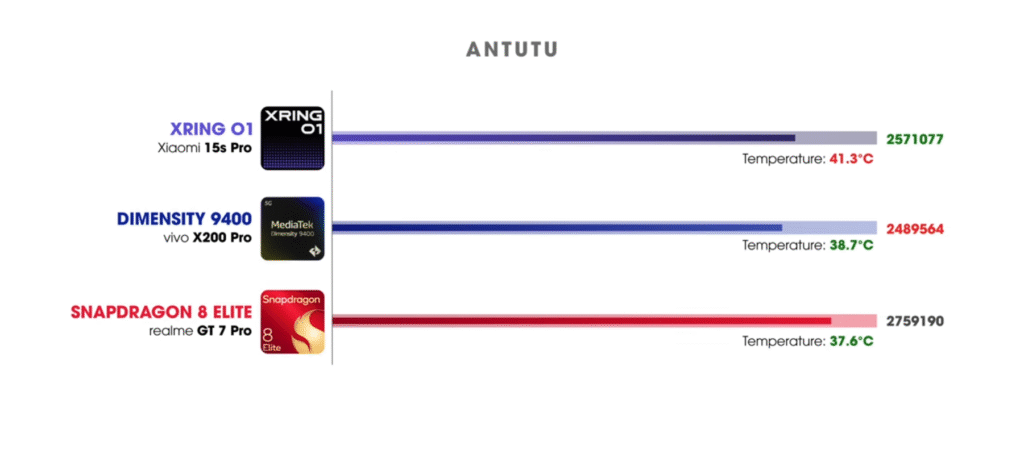

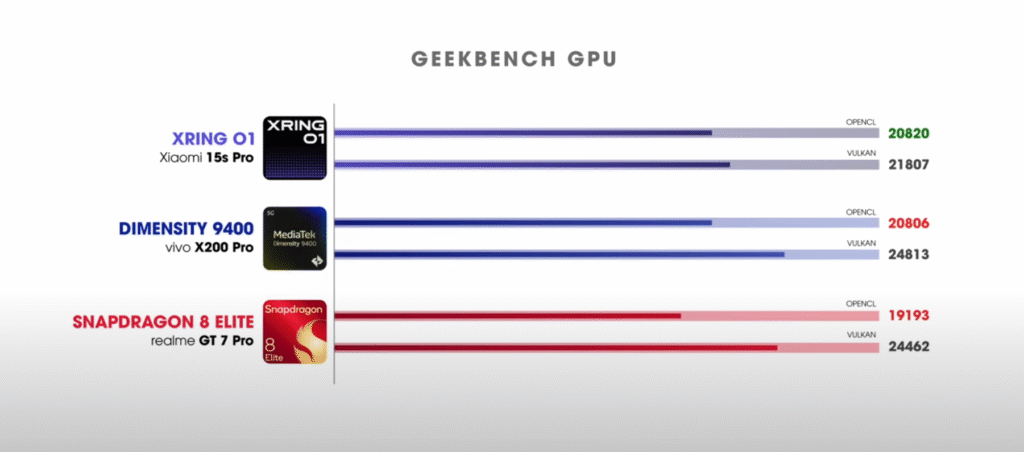
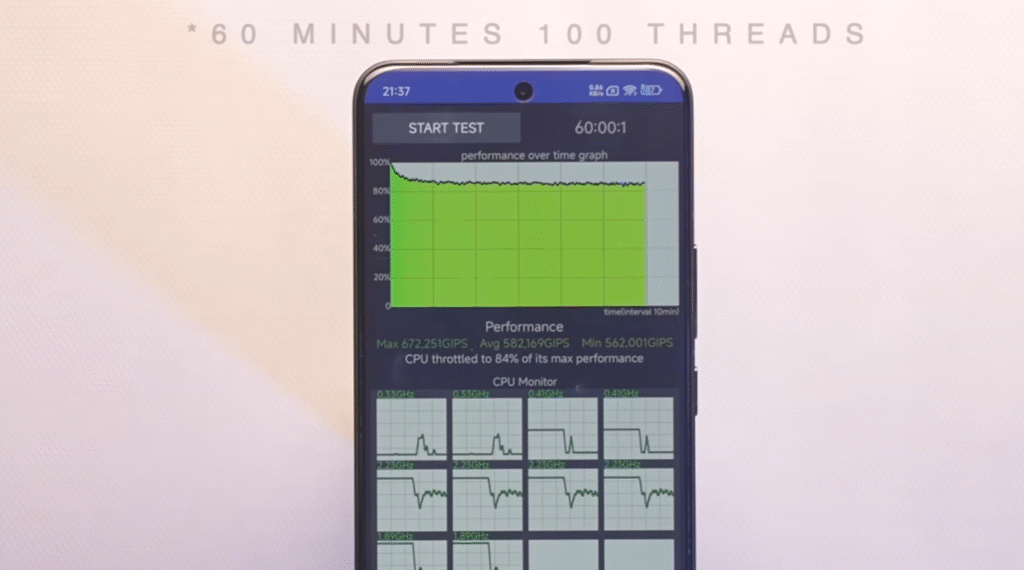
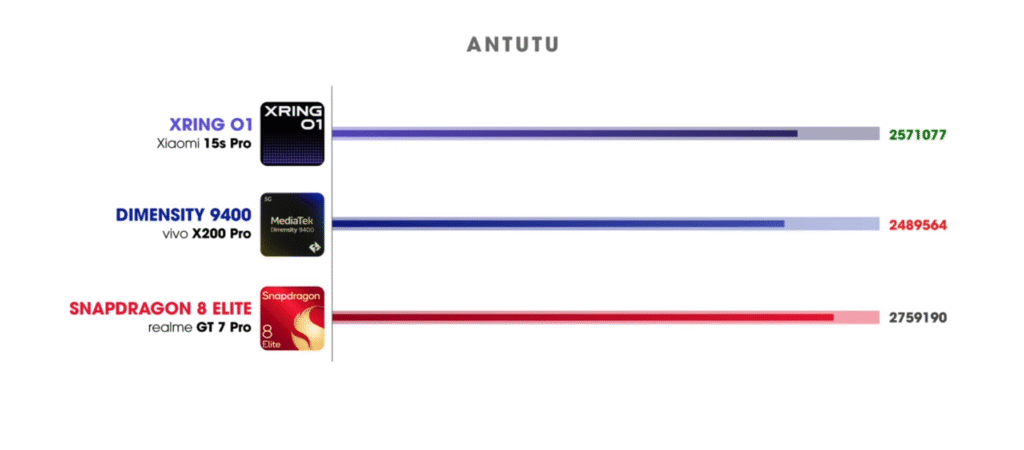
Benchmark Performance: Surprisingly Impressive
Let’s dive into raw numbers:
- AnTuTu: Scores over 2.5 million, beating Dimensity 9400 and just behind Snapdragon 8 Gen 3.
- Geekbench:
- Single-core: Beats Dimensity 9400.
- Multi-core: Even beats Apple’s A18 Pro—yes, you read that right.
- GPU (OpenCL): Topped the charts.
- GPU (Vulkan): Slightly behind—but only by a margin.
- CPU Throttling Tests: Most stable among all tested chips, even in 100-minute stress runs.
Takeaway: For a first attempt, this is unbelievable.
Gaming Performance: Smooth as Butter
We tested the XRING O1 on multiple popular games:
- Call of Duty: Mobile – Runs flawlessly at 120FPS.
- Genshin Impact – Held an average of 59.8 FPS at highest settings.
- Wuthering Waves – Smooth gameplay with no frame drops.
- BGMI – Locked to 60 FPS due to region limitations, but performance was excellent.
Thermals? During benchmark stress, it does warm up more than competitors, but gaming temperatures were well within safe limits.
ISP (Image Signal Processor): Xiaomi’s In-House Magic
Image quality was another big question mark, but Xiaomi has nailed it with their 4th-gen in-house ISP.
- Photos: Sharp and color-accurate from all three 50MP cameras (main, ultra-wide, and telephoto).
- Video: Better night-time results and improved dynamic range compared to Snapdragon’s ISP.
- Cons:
- Slight green tint in ultra-wide shots.
- Viewfinder clarity needs improvement.
- Leica color science slightly weaker.
Overall, the image output is nearly on par with Snapdragon, which is insane for a first-gen chip.
Network and Connectivity
We tested network performance with a Jio SIM in India and the results were excellent—better than Tensor, in fact. That’s a bold statement, but the real-world speeds don’t lie.
Final Verdict: A Massive Win for Xiaomi
The XRING O1 is a landmark achievement. For a company that began by developing custom Android ROMs, Xiaomi has now created one of the best performing smartphone chipsets on the planet—on their very first try.
It beats MediaTek.
It challenges Snapdragon.
It shocks Apple’s A-series (in multi-core).
While Tensor and Exynos might still be in the safe zone, the pressure is on.
We really hope Xiaomi brings mid-range and budget versions of this chip to India. That would make the smartphone space even more competitive—and that’s always a win for consumers.
